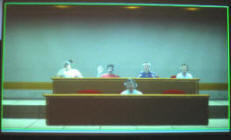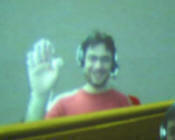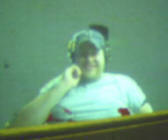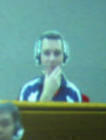This is an old revision of the document!
| Summary |
More than half of the higher education institutions in the United States offer distance learning services, and the enrollment doubles every three years. Unfortunately, current distance learning systems fail to match the effectiveness of conventional on-campus learning. Remote students feel isolated because of low level of interactivity during remotely delivered lectures and because of lack of access to other proven on-campus learning activities such as office hours and study groups.
We have begun developing a distance learning system that promises to deliver high-quality education remotely. The primary design concerns are sustained interactivity and visual realism to ensure effectiveness, and use of commodity hardware to ensure deployment scalability. Every classroom on every campus can and should provide distance learning seats; any course should be accessible to remote students. It is our goal to make distance learning an integral but unobtrusive part of proven conventional on-campus learning, as opposed to a parallel activity that drains considerable resources and is often ineffectual.
The system enables the interactive participation of remote students to on-campus lectures. Remote students–each one potentially located at a different site–are integrated in a virtual extension of the local classroom (Figure 1). The local classroom extension is projected onto the back wall using a rear-facing projector. A remote student is acquired with a webcam and is modeled with a real-time video sprite. A high-quality integrated audio feed delivers instructor and remote student audio to all sites. The system relies exclusively on commodity hardware components (Figure 2).
Current and future work includes running a pilot course to measure educational effectiveness, achieving scalability with number of remote students and with geographic area, and developing support for study groups and office hours.
Download a video that shows the system in use: AVI, MOV |
 |
    |
| Figure 1: Distance learning system deployed in first classroom (top) and photographs of back screen showing remote students. |
 |
| Figure 2. Hardware components of distance learning system. |
| How to Get Involved |
| We are looking for motivated graduate and undergraduate students from computer science (graphics and networking), computer graphics technology, and educational science. The first step is to register for an independent-study-like course. Successful students will be offered support to continue to work on the project beyond the end of the semester. Email us at popescu@cs.purdue.edu. |
| Acknowledgment/Disclaimer |
This material is based upon work supported by the National Science Foundation under Grant No. 0417458.
Any opinions, findings, and conclusions or recommendations expressed in this material are those of the author(s) and do not necessarily reflect the views of the National Science Foundation. |

